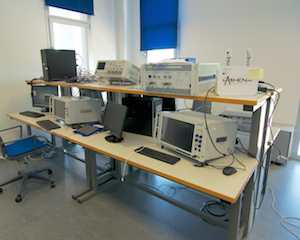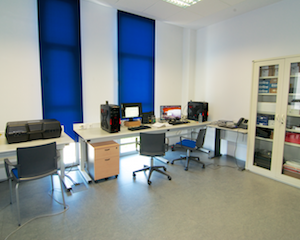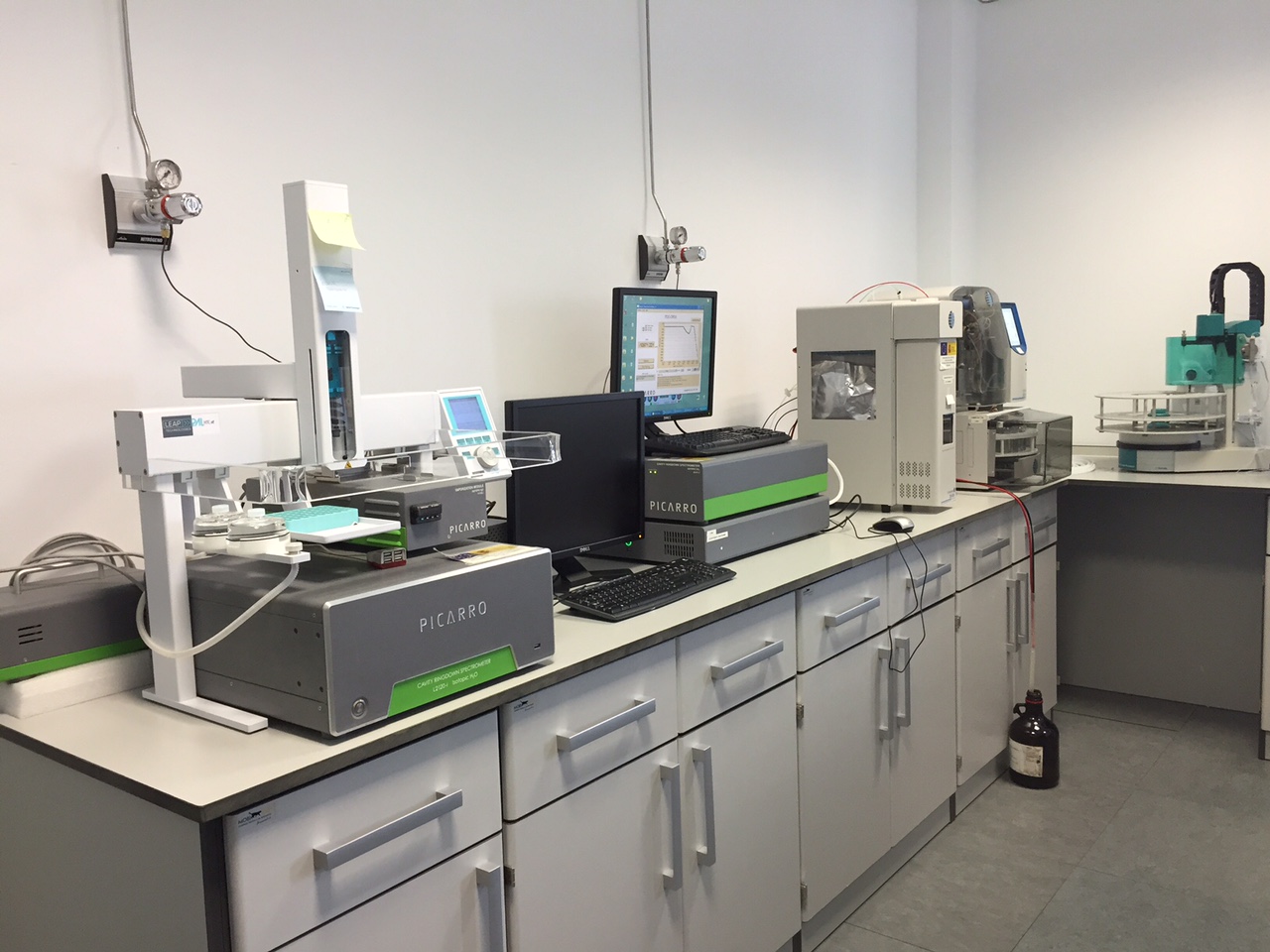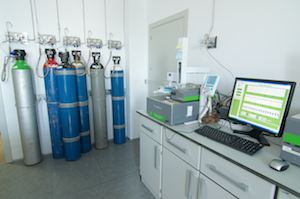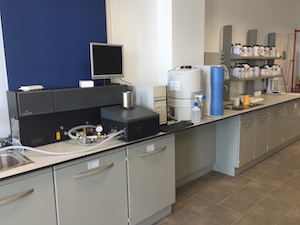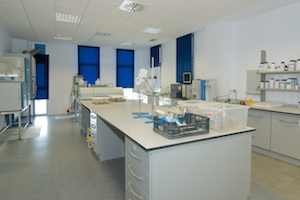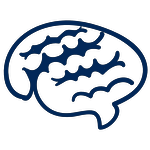Research labs
The building has several research laboratories, belonging to CAITI and CITAT, which facilitate the development of working prototypes, platforms to deploy communications, solutions for analysing communication protocols over a wide range of frequencies, advanced environments for developing computing forensics, etc.
|
|
LTE Laboratory (CAITI) The LTE (Long Term Evolution) laboratory in the Ada Byron R&D building allows a wide range of tests for 4G communication protocols to be carried out in a multidisciplinary approach which encompasses aspects such as energy consumption, network settings and implementation of protocols. The working environment provides a European level experimentation framework which allows LTE end-to-end networks to be set up as well as permitting the protocol stacks to be modified in most of the elements receiving multi-layer correlated information. The laboratory not only has access to comercial hardware and software but has also been expanded to include the tools developed by the MORSE (Mobile Network and Software Reliability) group. These include configuration and control tools and a micro-implementation of a core LTE network compatible with commercial equipment. Taken together, all of this provides a first class working environment. There are very few similar facilities to be found in the rest of Europe. |
|
|
Security Laboratory (CAITI) This laboratory belongs to NICS Lab. It has a wide range of development kits for multi-tech wireless communications which operate on irregular frequency ranges, covering such protocols as ZigBee, Bluetooth Low Energy, 6LoWPAN, RFID y NFC. Moreover the laboratory has a NIVIS development platform for wireless sensors which implement WirelessHart e ISA 100.11a industrial protocol communications. As part of the equipment available, tools for communication protocols analysis are provided. These include various solutions for capturing and analysing Frontline communications: SerialTest with Modbus y RS-232 support, ComProbe USB 2.0 Protocol Analyser, Ethernet Comprobe + Aggregator Ethernet Tap y NetDecoder. The building also has 3 National Instruments (NI USRP-2932) software defined (Tx/Rx) radio transceivers which provide a continuous frequency coverage from 400 MHz up to 4.4 GHz. These devices have built in GPS-disciplined clock transceivers, using an OCXO crystal with a precision of 10 MHz and can be synchronised with MIMO.
Two other computers installed in the same security laboratory offer services for undertaking computer forensics tasks. These machines have a wide range of options for receiving data and two licensed professional forensic analysis suites installed which enables the forensic analysis of a wide range of devices. |
|
|
Water Laboratory (CITAT)
This laboratory belongs to CEHIUMA and is equipped with the following analysis instruments:
|
|
|
Geomorphology and Soil Laboratory (CITAT) The Geomorphology and soil laboratory, GSoilLab, is a centre affliated with the University of Málaga, part of the research group RNM279 (Physical Geography). It offers analytical support for research, as well as analysis services, consulting and advice to both private individuales and institutions. The main function of the laboratory is to foster practical, affordable and novel solutions to current problems related to nutrient management, soil quality and regeneration of soils. The possible fields of action are highly varied, encompassing from cultivated land to natural environments and from golf courses to urban parks.
The laboratory is equipped with: a Spectrometer, Coulter LS320, a Pressure Plate, a Pressure Membrane, Hyprop, Sandbox, WP4-T, CheckMate3, a Bernard Calcimeter, Mufla Oven, Laboratory Oven, an Air Pycnometer, Humid Sifter, Disc Permeameter, pH-meter, Conductivity meter, a Ball Mill and Pestal, Sifter, Analytical Balance, Mutilmix Heat D, a Digtor 21 Centrifuge and Dessicator. |
Information
|
Resources
|
Research
|
Support Services
|

